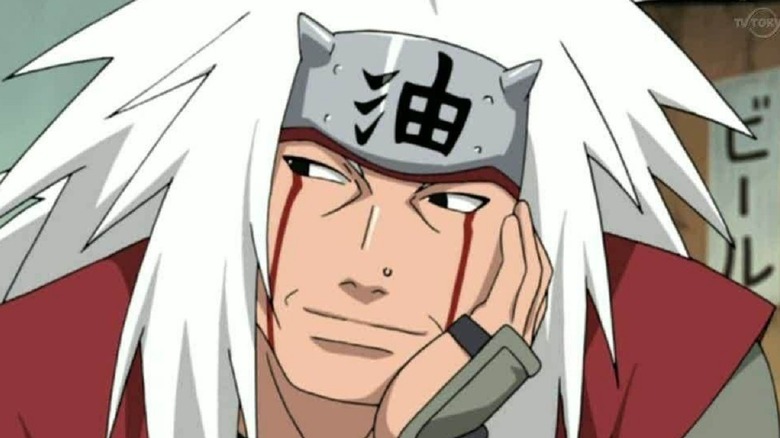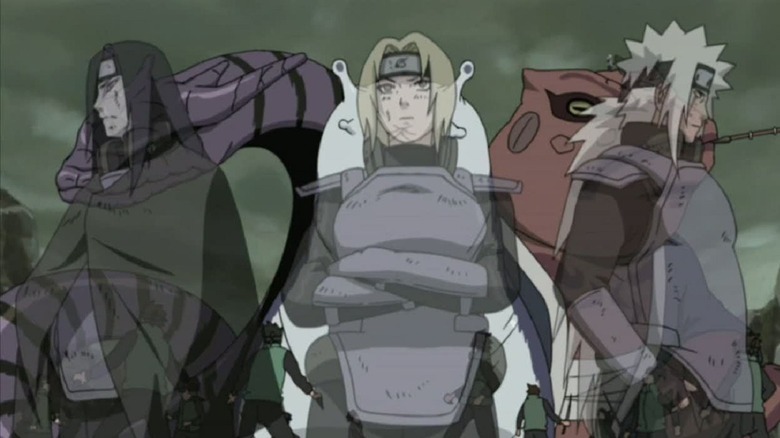The Japanese Folklore Behind Naruto's Legendary Sannin
The insanely beloved Shonen series "Naruto" was the result of a melting pot of different influences, both traditional and folkloric as well as popular culture references. From being inspired by more experienced manga authors like Akira Toriyama and Katsuhiro Otomo to being creatively stimulated by action-filled movies to incorporating mythological aspects like the nine-tailed fox deities that were behind the idea for Kyūbi, "Naruto" is packed with Easter eggs and cultural allusions. These elements add a sense of depth to the story, deeply burying its thematic roots in fertile soil.
One example that stems from Japanese culture and literary tradition, is in the form of the three legendary Sannin: Orochimaru, Tsunade, and Jiraiya. Not only are their names and characters inspired by folklore, but the animals they have affinities with are also part of real-life legends. These three strong ninjas from the Hidden Leaf village played a major role in "Naruto" by serving as teachers to each of the three promising genin in Team 7.
Orochimaru, Tsunade, and Jiraiya are inspired by and named after the characters from "Jiraiya Goketsu Monogatari" (translated to "The Tale of Jiraiya the Gallant"), a tale which has its first recorded origin at the beginning of the 19th century.
Slug, snake, frog
For the next several decades, "The Tale of Jiraiya the Gallant" was given multiple adaptations by different authors. In the 20th century, it served as inspiration for many creative media like films and video games (via LSA University of Michigan). One movie example was the silent 1921 film "Gôketsu Jiraiya" by director Shôzô Makino.
The Jiraiya of the tale, instead of being able to summon massive toads to fight for him, was able to transform into one himself. Tsunade is also a character in the story, and like her "Naruto" counterpart, she learns how to use slug magic. She also ends up marrying Jiraiya in the original; this is something that never comes close to happening on "Naruto," even though it was implied that they had feelings for each other.
Orochimaru is also a character that can be found in the original folktale. In the story, he was a thief and the son of a human and a serpent, and he also served as an archnemesis to Jiraiya.
Furthermore, the original version of the Japanese "rock, paper, scissors", sansukumi-ken, used the slug, snake, and frog as the three objects in the game. In this early rendition, the Snake beat the Frog, the Slug beat the Snake, and the Frog beat the Slug, per the book "The Culture of Japan as Seen through its Leisure." This is also reflected in the original tale, wherein Slug magic is strong against Snake, and Snake is strong against Frog.
Thanks to Kishimoto, there are many elements of Japanese culture and lore that became recognizable around the globe due to the serialization and widespread popularity of "Naruto." Although the manga has ended, the knowledge and cultural awareness it imparted is not only undeniable but is also enduring in the collective consciousness of thousands of fans.

